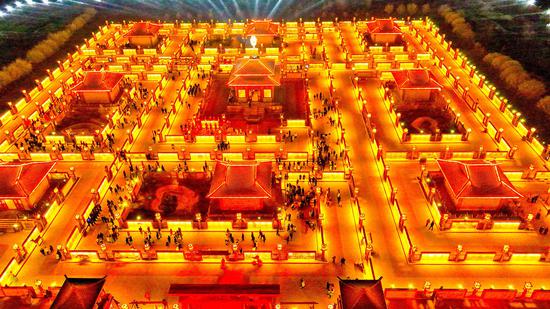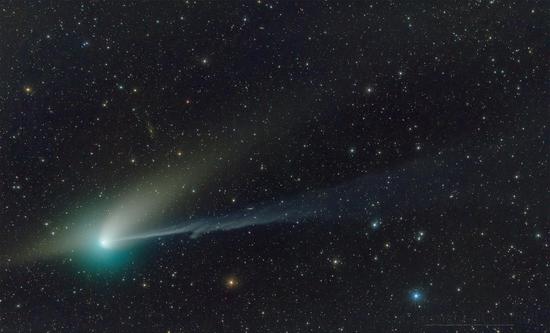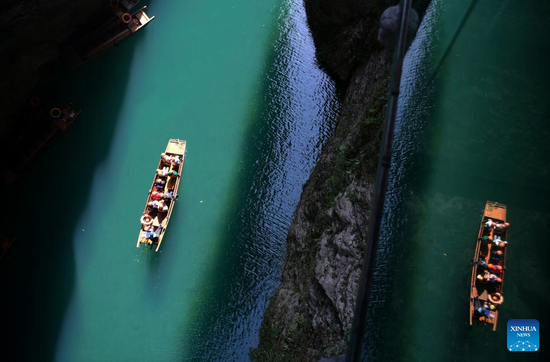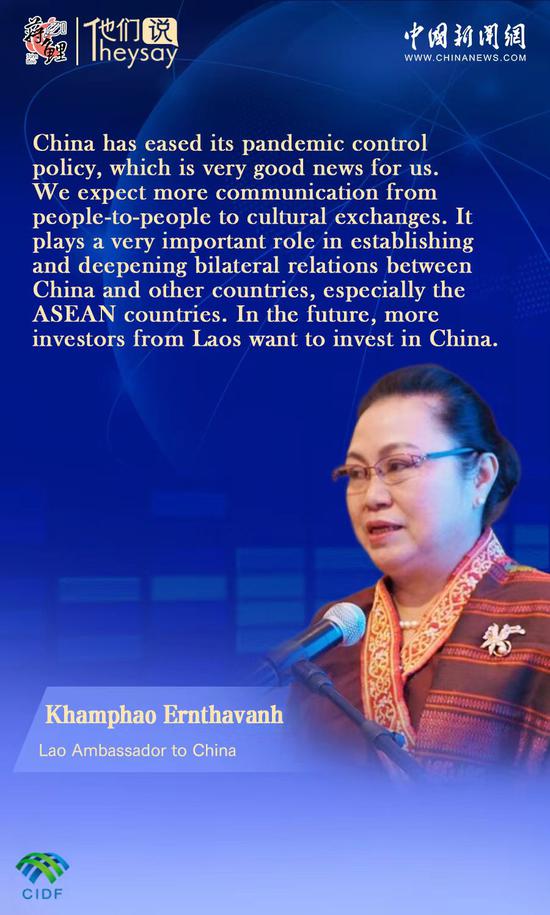
Relics unearthed at the Tanshishan site. (Photo: China News Service/ Wang Dongming)
By Long Min, China News Service
--An interview with Dong Ping, curator of the Museum of Tanshishan Historical Relics
(CNS)-- Tanshishan is the earliest named archaeological culture on China’s southeast coast and the first recognized in Fujian Province, also the source of marine culture in Fujian and Taiwan during the pre-Qin period, before 221 B.C. In October 2021, the 100th anniversary of the birth of modern Chinese archaeology, the Tanshishan site was selected as one of China's Top 100 Archaeological Discoveries of the Century. It is the only one selected in Fujian Province.
In a recent interview with China News Service, Dong Ping, curator of the Museum of Tanshishan Historical Relics, said that the excavation and research of Tanshishan cultural relics set a good example for prehistoric culture in Fujian because it pushed the history of Fujian civilization back from 3,000 years to 5,000 years ago, proving Su Bingqi’s theory on the pluralistic origin of Chinese civilization.
CNS: The Tanshishan site was selected among China’s Top 100 Archaeological Discoveries of the Century. What kind of prehistoric cultural sites is it?
Dong Ping: It is a site of cultural relics ranging from the Neolithic to the Bronze Age, discovered in 1954. It boasts an area of more than 30,000 square meters and well-preserved cultural artifacts.
So far, nearly 100 burials have been found, along with other cultural relics, such as pottery kilns, trenches, ash pit, and a large number of valuable cultural artifacts. Among them, as the Neolithic culture contained in these artifacts has local characteristics, the archaeological community has named it Tanshishan culture, distributed mainly in the lower reaches of the Minjiang River and Fujina’s eastern coastal areas.
Five thousand years ago, the ancestors of the Tanshishan culture, centered on the lower reaches of the Minjiang River, broke through brambles and thorns to reclaim the wasteland; picked shells from the seashore; hunted deer in the mountains and forests; farmed and grazed; made pottery and weaving; and strived for a new home, creating the first of the humanistic lineage of Min districts. Moreover, with the expanded exploration of the ocean, its people traveled cross-strait, thus becoming one of the important origins of the Austronesian cultures.
In 2001, The site was approved by the State Council among the fifth group of national key sites for protecting cultural relics. As for the history of archaeological development in Fujian, the excavation of the Tanshishan site opened the first chapter of archaeology in Fujian in the New China. It is the Fujian prehistoric site with the largest excavated area and number of relics.
CNS: How was it discovered? What achievements have been made in the archaeological excavations?
Dong Ping: The Tanshishan site is on the eastern coast of Fujian Province, on the northwest side of a hill, in Tanshishan Village, Minhou County, Fuzhou City, adjacent to Minhou County, about 20 kilometers from Fuzhou on the east.
In January 1954, int the seventh district of Hengxin Township in Tanshi Village (now Danshi Village, on Ganzhe Street), villagers building a dam across the Minjiang River inadvertently dug up a pile of an ancient, peculiar style of pottery, stone tools and bone tools, as well as a thick pile of white shells. That April, the East China Cultural Relics Work Team assigned experts to investigate and found that the site contained rich relics and was an important cultural heritage of the Late Neolithic period. So in-depth excavation was needed, and thus it was named the Tanshishan Site.
After 10 archaeological excavations, the total excavation area reached more than 2,000 square meters. And a large number of relics such as trenches, ash pits, sacrificial pits, pottery kilns, stoves, pillar holes, etc. were found. More than 80 burials and a rich variety of cultural relics, including tools made of stone, bone, horns, teeth, shells pottery andjade, as well as primitive porcelain, were excavated.
These cultural relics and other archaeological materials reflect the rich cultural connotation and distinctive regional maritime cultural characteristics of the Tanshishan site, which has high archaeological research value. The previously unknown Min culture has also been gradually uncovered.
CNS: Why do we say that Fujian marine culture started from the Tanshishan site?
Dong Ping: During the Neolithic period, the role of mankind gradually underwent a major transformation from mere natural parasites to transformers, and people began to rely less on nature. During this period, the ancestors of Tanshishan culture also made creations with great maritime cultural characteristics.
Some of the artifacts excavated at the Tanshishan site, such as shellware and pottery kettles, have distinctive characteristics of marine culture and are the earliest, most representative and most systematic in Fujian.
Shellware is a distinctive marine cultural artifact of Tanshishan culture, and the use of oyster shells to make various production tools is a unique cultural phenomenon. From the archaeological material, this shellware has four types: shovels, knives, chisels and adze-type ware, of which a majority of are shovels, and knives.
The shell shovel of Tanshishan culture is made of shell from the long oyster. Long oysters are one of the larger oysters in their family and are found mainly in the intertidal zone and shallow reefs of the sea. Most of the shellware was made of thin, flat right shells. The production of stone tools was more developed in this period, so the techniques for making stone tools, such as drilling, cutting and grinding, were also applied to the processing of shellware. The holes in the shellware were all formed by double-sided drilling, and the method used was not only chisel drilling but also cone drilling.
In the environment of the mountains and the sea at that time, it was especially important to discuss the sea economy. As a production tool, shells played an important role: a shell shovel can be used to dig all kinds of seafood in the mudflats; a shellfish knife can scrape animal fur, scales off seafood, etc.
Pottery kettles are the most typical and the most excavated pottery at the Tanshishan site. As the saying goes, “An empty sack cannot stand upright.” In the process of human civilization’s development, cooked food improved human hygiene and promote physical and brain development, and pottery was the most suitable container. At the end of 1996, archaeologists found 18 pieces of pottery kettles, large and small, in the same tomb at the Tanshishan site, and the number is extremely rare. Many of these kettles have traces of fire at the bottom, and it is presumed that they were cooking utensils. The number of burial goods unearthed from different tombs showsthe social differentiation between the rich and poor and the hierarchical differentiation of the people of Tanshishan at that time. It can also be seen that thousands of years ago, at the confluence of the river and the sea, the ancestors of Tanshishan have begun to pay attention to delicacy: they cooked river food and seafood separately, refining the cooking.
The pottery kettle has carried the unique food culture of the Min people for thousands of years, so the dietary characteristics of the Tanshishan people, who sought food from the river and sea and love to drink soup, are fully reflected in the pottery kettle. This is also one of the distinctive features that distinguish the Tanshishan culture from the cultural remains of the Yellow River and the Yangtze River basin at the same time, with distinctive marine characteristics.
CNS: Why is the discovery of the Tanshishan site strong proof of the theory of pluralistic origin of Chinese civilization?
Dong Ping: In 1963, the archaeological community named the remains of the Neolithic culture in Fujian, represented by the geometric hard pottery excavated in the middle and lower layers of the Tanshishan site, as Tanshishan culture. The eighth archaeological excavation, carried out in 1996, clarified the relationship of the Tanshishan site to chronology.
Based on the stratigraphic accumulation, superimposition and the characteristics of the unearthed remains and relics, combined with the principles of archaeological stratigraphy and archaeological dating through scientific and technological means, experts believe that the site can be divided into at least four cultural connotations of "different stages and cultural nature": the first phase, the earliest human activity in this time, 5,500 to 5,000 years ago; the second, the most important and core of the Tanshishan culture, with the most abundant excavated artifacts, 5,000 to 4,300 years ago; the third, 4,300 to 3,500 years ago; and the fourth, 3,500 to 2,700 years ago. Among them, the Tanshishan site of the first and second phases of culture is equivalent to the Yangshao culture period in northern China; the third phase is equivalent to the northern Longshan culture period; and the fourth phase is equivalent to the Shang and Zhou dynasties.
It may be seen that the Tanshishan site is mainly remains of Neolithic cultural, as well as Bronze Age culture. Their duration is more than 2,500 years. The lower limit of its duration has been close to the period of the Min Yue Kingdom recorded in the official history of China. It expands the history of Fujian civilization from 3,000 years to 5,000 years and is a strong proof of the theory on pluralistic origin of Chinese civilization proposed by Su Bingqi [a founder of Peking University’s archaeology program].
CNS: How to strengthen the archaeology of Tanshishan site, promote Tanshishan culture and deepen the study of the origin of Chinese civilization?
Dong Ping: The Tanshishan site is the cradle of ancient Fujian marine culture and the Min nationality in the pre-Qin period, as well as the epitome of early humans’ production and life on the southeast coast. The rich history and culture here is essential to the historical development process for the southeast coastal region, and for the ancient Chinese maritime civilization. From the production tools and living utensils unearthed, we can see the creation of a very marine culture characterized by the Min-Yue ancestors who were here more than 5,000 years ago. There are pottery kettles that have a profound influence on the food culture of Fujian today, as well as stone production tools and living customs similar to those people of the Austronesian family, reflecting the cultural exchange between Fujian and Taiwan.
The Tanshishan site shoulders the responsibility for research on the ancient culture of Fujian during the Neolithic period and is important for the study of prehistoric navigation technology, the origin and spread of the Austronesian family, etc. It is hoped the Tanshishan site will become an important medium for communicating history and culture across the Taiwan Strait, and a historical and cultural platform for linking Fujian and Taiwan.
First, joint multidisciplinary research to promote more achievements at the Tanshishan site needs to be strengthened. The Museum of Tanshishan Historical Relics uses digital technology to explore the protection and display of the site. Through data collection, we digitally retained 1,050 square meters of archaeological excavation sites in the Tanshishan Site Exhibition Hall and 370 specimens of excavated artifacts, laying the foundation for the next archaeological excavation of the site.
Second, the creative transformation and innovative development of outstanding Chinese traditional culture should be promoted. Since 2014, the museum has put forward the development idea of "exploring culture beyond the sites," focusing on Tanshishan culture and carrying out in-depth research on its origin and distribution. In 2018, it independently completed the project "Research on Prehistoric Sites in the Lower Reaches of the Minjiang River Basin," involving 10 counties (cities and districts), completely covering the entire lower Minjiang River basin and the Gutian Creek basin in the middle reaches, basically mapping the distribution of prehistoric cultural sites in the region and filling a longstanding academic gap. Now the museum has discovered the site of Shangpan Village, the base of the Austronesian family in Pingtan, providing firsthand information for archaeological exploration and research on the Austronesian family.
Third, the protection and use of Tanshishan site and inheritance of cultural heritage need to be promoted, and the multiple values of Tanshishan cultural heritage explored. This includes disseminating more value symbols and cultural products bearing Tanshishan culture to tell the story of prehistoric maritime culture in Fujian. Research ideas also need to be expanded. We will take Tanshishan culture as the cornerstone of our research and explore its relationship with other important archaeological sites, such as Wanshouyan Paleolithic Site, Pingtan Group, strengthening the foundation of Fujian civilization and marine culture research, and scientifically playing a role in research on Chinese civilization.
Translated by LI Shuqi


















































 京公网安备 11010202009201号
京公网安备 11010202009201号